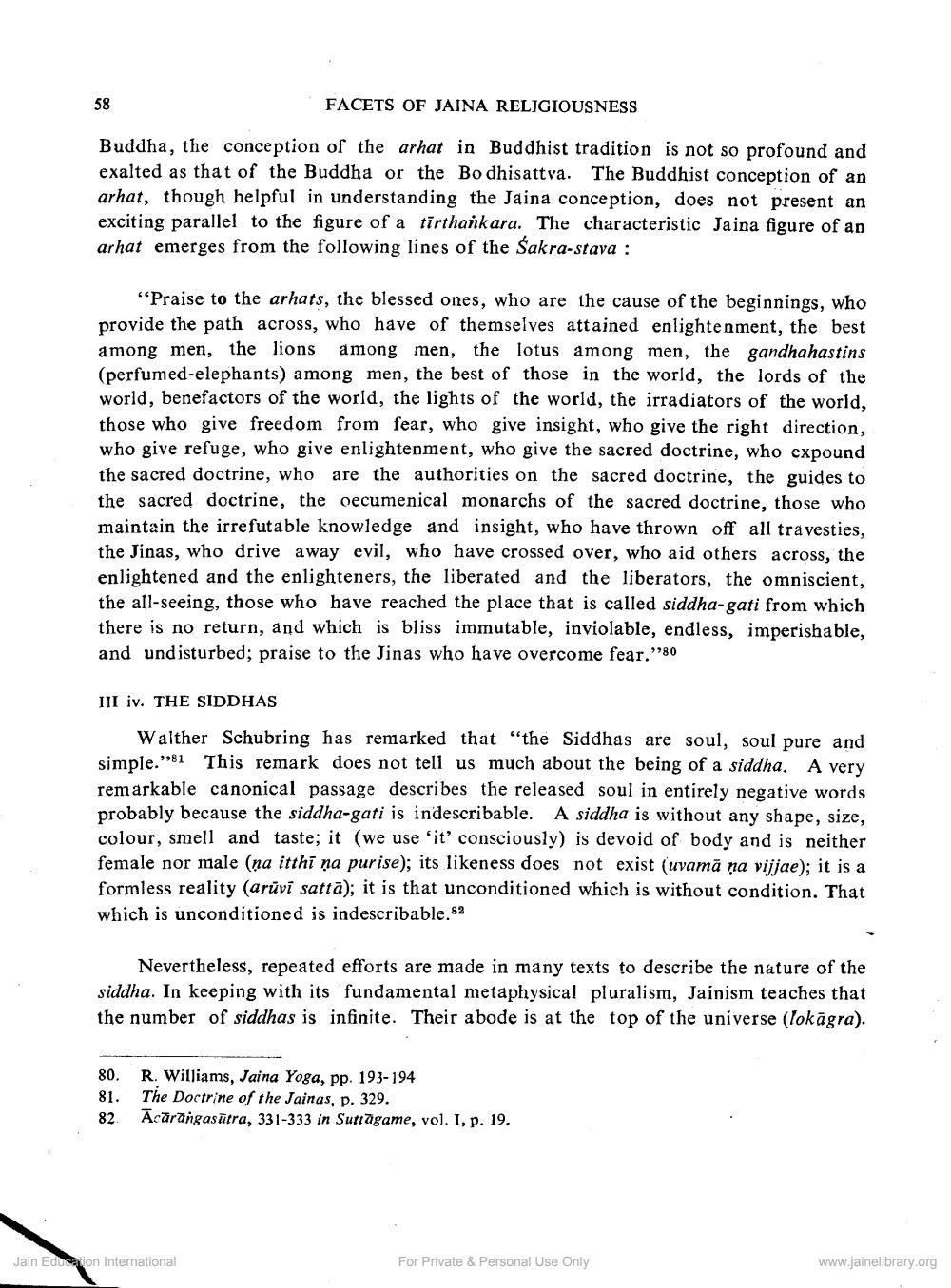________________
58
FACETS OF JAINA RELIGIOUSNESS
Buddha, the conception of the arhat in Buddhist tradition is not so profound and exalted as that of the Buddha or the Bodhisattva. The Buddhist conception of an arhat, though helpful in understanding the Jaina conception, does not present an exciting parallel to the figure of a tirthankara. The characteristic Jaina figure of an arhat emerges from the following lines of the Sakra-stava :
“Praise to the arhats, the blessed ones, who are the cause of the beginnings, who provide the path across, who have of themselves attained enlightenment, the best among men, the lions among men, the lotus among men, the gandhahastins (perfumed-elephants) among men, the best of those in the world, the lords of the world, benefactors of the world, the lights of the world, the irradiators of the world, those who give freedom from fear, who give insight, who give the right direction, who give refuge, who give enlightenment, who give the sacred doctrine, who expound the sacred doctrine, who are the authorities on the sacred doctrine, the guides to the sacred doctrine, the oecumenical monarchs of the sacred doctrine, those who maintain the irrefutable knowledge and insight, who have thrown off all travesties, the Jinas, who drive away evil, who have crossed over, who aid others across, the enlightened and the enlighteners, the liberated and the liberators, the omniscient, the all-seeing, those who have reached the place that is called siddha-gati from which there is no return, and which is bliss immutable, inviolable, endless, imperishable, and undisturbed; praise to the Jinas who have overcome fear.''80
III iv. THE SIDDHAS
Walther Schubring has remarked that "the Siddhas are soul, soul pure and simple.”81 This remark does not tell us much about the being of a siddha. A very remarkable canonical passage describes the released soul in entirely negative words probably because the siddha-gati is indescribable. A siddha is without any shape, size, colour, smell and taste; it (we use 'it' consciously) is devoid of body and is neither female nor male (na itthi na purise); its likeness does not exist (uvamā ņa vijjae); it is a formless reality (arūvi sattā); it is that unconditioned which is without condition. That which is unconditioned is indescribable. 82
Nevertheless, repeated efforts are made in many texts to describe the nature of the siddha. In keeping with its fundamental metaphysical pluralism, Jainism teaches that the number of siddhas is infinite. Their abode is at the top of the universe (lokāgra).
80. 81. 82
R. Williams, Jaina Yoga, pp. 193-194 The Doctrine of the Jainas, p. 329. Ācārangasūtra, 331-333 in Suttāgame, vol. I, p. 19.
Jain Education International
For Private & Personal Use Only
www.jainelibrary.org




